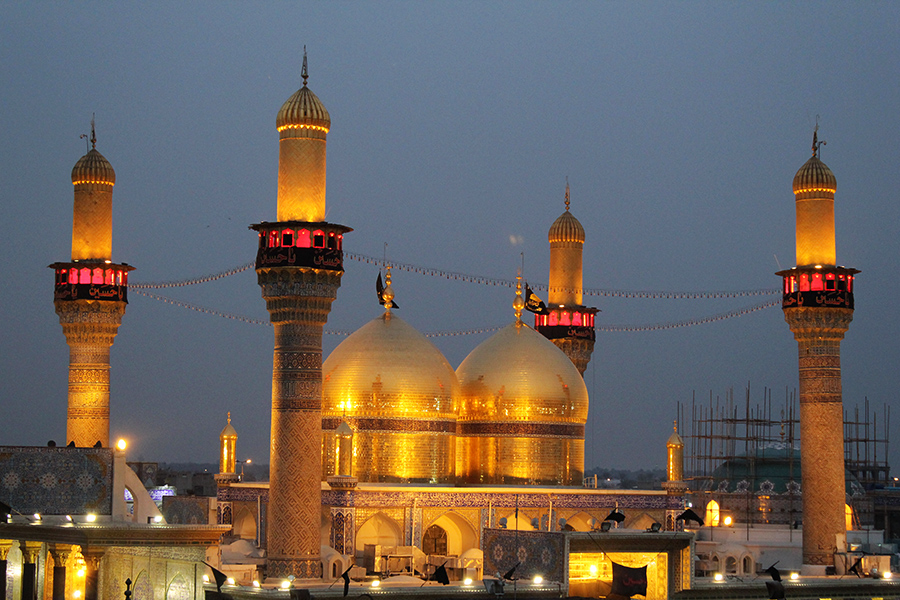How was the Imamate of Imam Al Jawad (a.s) designated?
The texts issued by A Imam Al Rida (a.s) concerning the Imamate of his son, Al Imam Al Jawad (a.s), progressed gradually from before Al Jawad’s birth and continued until shortly before Al Ridha’s martyrdom. These texts aimed to prepare and establish the necessary foundation for the early Imamate of Al Imam A Jawad, a unique occurrence in the history of Ahlul Bayt (peace be upon them). The number of these texts is around forty, and they can be classified into different categories: ten texts date back to before his birth, several texts were issued after his birth, approximately fourteen texts relate to his childhood, and ten texts are specific to the period before Al Imam Al Ridha’s martyrdom, beginning with his departure from Medina and ending with his settlement in Khorasan and Tus.
The essential factor in the matter of Imamate is the textual designation (nass), which was narrated by many of Al Imam Al Rida’s esteemed companions, as mentioned by Sheikh Al Mufid in “Al Irshad[1].” Professor Attarudi has compiled nearly all of these texts in his book “Musnad Al Imam Al Jawad (a.s).”
Before him, Allamah Al Majlisi also took the initiative to dedicate a chapter in his book Bihar Al Anwar to mention the texts related to the Imamate of Muhammad ibn Ali Al Jawad (a.s). These narrations make it clear that Al Imam Al Ridha (a.s) pointed several times to the Imamate of his son and informed his esteemed companions of this matter. In fact, the steadfastness of most of the companions and their adherence to following Al Imam Al Jawad (a.s), those who narrated these reports, serves as the best evidence of the legitimacy of Al Jawad’s Imamate.
The Political Situation in the Era of Al Imam Al Jawad (a.s)
Our historical knowledge about the life of Al Imam Al Jawad (a.s) is limited. This is due to political pressures that led to the suppression of information about the Imams (a.s) to keep them safe from the harm of enemies.
Another reason is the short life of the Al Imam (a.s), which left little time to gather information about him.
At the same time, the secret behind the initial success and rise of the Abbasid state lay in its connection to Ahlul Bayt (peace be upon them). The Abbasids controlled and dominated the Muslim community by claiming close kinship to the Prophet Muhammad (pbuh) and demanding the rights of Ahlul Bayt under the banner of “satisfaction for the family of Muhammad” (pbuh).
Therefore, it was natural that the real threat to the Abbasids and their caliphate came from the Alawites, who had a stronger argument and a closer relationship to the Prophet (pbuh).
As for Al Ma’mun Al Abbasi, he faced serious and significant challenges that threatened his rule and stability. Remaining in power required a great deal of cunning and maneuvering because he was confronted by:
1 - The intense Shi’a movement against him, including the revolt of Abu Al Saraya, which spread across many Islamic cities.
2 - The solidarity of the Abbasid family against him, as they supported Al Amin.
3 - External threats from other states hostile to the Islamic state, such as the Byzantine Empire.
In response to these challenges, Al Ma’mun took the following actions:
1 - He eliminated his brother Al Amin and the strong forces moving against him.
2 - He orchestrated the forced appointment of Al Imam Al Rida (a.s) as his successor, to create the impression for the Muslim community that he was aligned with the legitimate leadership.
3 - He fought and suppressed Alawite revolts.
4 - He physically eliminated Imam al-Ridha (peace be upon him).
5 - He moved to Baghdad to suppress the opposition from the Abbasid family.
6 - He spread the “creation of the Quran” controversy to distract people from matters that truly concerned them.
7 - He turned his attention to fighting the Byzantine Empire to neutralize its threat.
As for the Muslim community, there is no doubt that they supported the leadership of Ahl al-Bayt (peace be upon them). All historical events and evidence support this, including the Abbasid authority’s necessity to appoint Imam al-Ridha (peace be upon him) as successor and to give the impression that the caliphate was being transferred from the Abbasids to Ahl al-Bayt (peace be upon them).
However, this support for the leadership of Ahl al-Bayt (peace be upon them) existed on three levels:
1 - The general public, who believed in the leadership of Ahl al-Bayt (peace be upon them) but lacked a deep, conscious connection with them.
2 - Opponents of the state who relied on armed struggle to overthrow it and establish legitimate rule.
3 - The true believers who were aware of the legitimate leadership; they were the companions and supporters of Imam al-Ridha (peace be upon him).
These are the main features of the political situation at the beginning of the era of Imam al-Jawad (peace be upon him).
* Research on the Political Life of Ahlul Bayt (pbuh), Al Maaref Islamic and Cultural Institution
[1] Al Irshad, 317


















